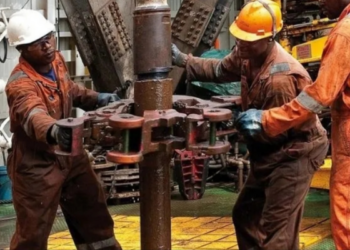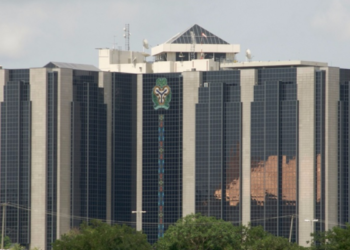According to the latest data from the National Bureau of Statistics, the total non-performing loans in Nigeria as at the end of April 2019 stood at N1.69 trillion. Considering the total gross loans of N15.4 trillion, it means that non-performing loans constitute 10.83% of total gross loans.
The breakdown shows that out of a total of N1.67 trillion non-performing loans (NPLs) as of April ending, Nigeria’s oil and gas sector accounts for over 60%. According to the NBS data, the NPLs accrued to Nigeria’s oil and gas sector was estimated at N777.84 billion.
Numbers Explained: Nigeria’s non-performing loans actually declined within the quarter under review. Between Q1 2018 and Q1 2019, the total non-performing loans dropped by 23%. Specifically, in Q1 2019, total non-performing loans decreased by N512 billion (23.4%). Despite the decrease, a whopping N1.67 trillion NPLs are still in several sectors of the economy.
The huge amount of NPLs in the economy has gained wide-spread criticisms. This has also become a cause of concern for commercial banks whose stability in the face of reeling economic downturns is uncertain.
The breakdown of Non-performing loans accrued to sectors of the economy reveals that Nigeria’s oil and gas sector is distant top, leading other sectors. A closer look at the data reveals that the oil performing loans in the oil sector declined by 93.3 billion as at the end of April 2019.
Top 8 sectors with the biggest non-performing loans include general commerce (N166.86 billion), general (N151.12 billion), manufacturing (N113.82 billion), power and energy (N100.47 billion), information and communication (N75.98 billion), real estate activities (N65.87 billion) and Construction (N59.73 billion).
Worrying trends: Non-Performing loans constitute one of the most serious liquidity barriers facing the Nigerian banking sector. Bank loans are regarded as risk assets because the monies advanced as loans by the banks belong to depositors. The risk arises in the event of massive defaults; depositors’ monies could become available on demand.
It should be noted that oftentimes, several prudential tools such as liquidity ratio, loans to deposit ratio, large exposure and reserve requirements have been applied to address the issues of banks non-performing loans.
Meanwhile, it is no surprise why Nigeria’s main economic driver (oil and gas) sector gathered over 60% of total non-performing loans in Nigeria. Sources have revealed that contractors and investors in the sector have largely depended on bank loans to manage their operations, with many defaulting to pay up. While the number has dropped in the last one year, the high number is still worrisome.
Tasks ahead for AMCON: Recently, the Managing Director, Asset Management Corporation of Nigeria (AMCON) Ahmed Kuru disclosed that in the last eight years of operation, AMCON bought NPLs worth N5.4 trillion from banks.
“While we have recovered N1 trillion from the bad debtors, the corporation has in the last eight years of operation, bought NPLs worth N5.4 trillion from banks. Also, there is N3.8 trillion AMCON Bond held sorely by the Central Bank of Nigeria (CBN) and this is expected to mature by 2023.”
However, recovering the remaining debts from billionaire debtors, who are taking strategic steps to ensure they do not payback, will remain a difficult task. In the meantime, daunting tasks lie with AMCON to put measures in place within its ambit to recover bad loans to ensure sustained liquidity in the Nigerian Banking system.






















